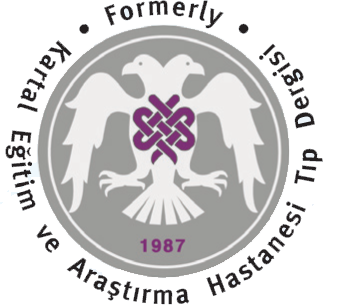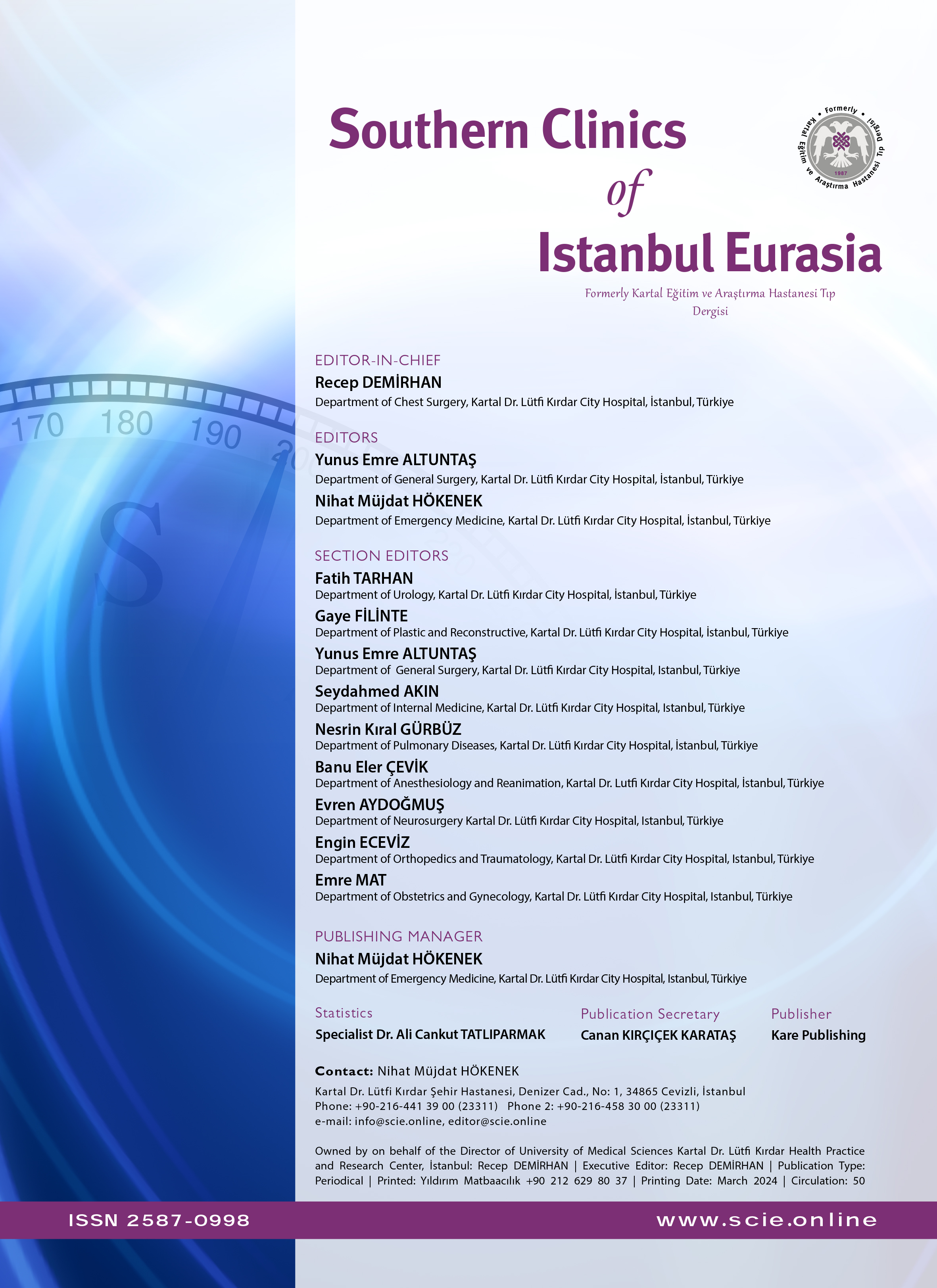Micrometastases screening in lymph node-negative breast carcinomas and comparison with prognostic parameters
Aylin Dengizmen1, Ayşenur Akyıldız İğdem2, Elife Şahan2, Nusret Erdoğan21Gebze Fatih State Hospital, Department of Pathology, Kocaeli, Turkey2Taksim Training and Research Hospital, Department of Pathology, İstanbul, Turkey
OBJECTIVE: The status of axillary lymph nodes has prognostic significance in breast cancer. In fact, patients diagnosed as axillary lymph node-negative by standard histopathological methods may have micrometastases. To date, 9-33% of cases were determined as having micrometastases in many studies using variable methods. In this study, axillary lymph nodes were investigated by increasing the sections and with immunohistochemical staining.
METHODS: Thirty-one patients with invasive breast cancer but without axillary lymph node metastases were included in this study. One hundred and thirteen paraffin blocks of 458 lymph nodes were sectioned at 300 micrometer intervals. Every section was stained with hematoxylin and eosin (H&E) and immunohistochemically by AE1-AE3 antibody.
RESULTS: Micrometastases were discovered in 6 (19.3%) of the 31 patients. Three of the discovered micrometastases were 0.2-2 mm in diameter and the other three were distributed as isolated tumor cells. There was an advanced meaningful association between lymphovascular invasion and micrometastases.
CONCLUSION: In patients with breast cancer who were evaluated by standard histopathological methods and were lymph node-negative, the possibility of discovering metastases may increase by increasing the lymph node sections and with H&E and immunohistochemical staining. Lymph node micrometastases can not be determined by standard histopathological methods.
Lenf nodu negatif meme kanserinde mikrometastaz taraması ve prognostik parametrelerle karşılaştırılması
Aylin Dengizmen1, Ayşenur Akyıldız İğdem2, Elife Şahan2, Nusret Erdoğan21Gebze Fatih Devlet Hastanesi, Patoloji Kliniği, Kocaeli2Taksim Eğitim ve Araştırma Hastanesi, Patoloji Kliniği, İstanbul
AMAÇ: Meme kanserinde aksiller lenf nodlarının durumu önemli bir prognostik belirleyicidir. Standart histopatolojik yöntemlerle aksiller lenf nodu negatif olarak rapor edilen hastaların aslında mikrometastazları olabilir. Çeşitli yöntemlerle bugüne kadar yapılan çalışmalarda %9-33 oranında mikrometastaz saptanmıştır. Bu çalışmada, aksiller lenf nodları hem kesit sayısı arttırılarak hem de immmünohistokimyasal (HK) yöntemle daha da ayrıntılı incelendi.
YÖNTEMLER: Aksiller lenf nodu metastazı olmayan 31 invaziv meme kanserli hasta çalışma kapsamına alındı. Toplam 458 lenf nodunu içeren 113 parafin bloktan 300 mikrometre arayla iki kesit alındı ve her bir kesit hematoksilen-eozin (H-E) ve İHK yöntemle sitokeratin AE1-AE3 antikoru ile boyandı.
BULGULAR: Otuz bir olgunun 6sında (%19,3) mikrometastaz saptandı. Belirlenen mikrometastazlarda, 3ünün çapı 0,2-2 mm arasında olup, diğer 3ü izole tümör hücreleri şeklinde dağılım göstermekteydi. Mikrometastaz ile lenfovasküler invazyon arasında ileri düzeyde anlamlı bir ilişki bulundu (p<0,05).
SONUÇ: Standart histopatolojik yöntemlerle değerlendirilen ve aksiller lenf nodları negatif olarak tanı alan meme kanserli hastalarda, lenf nodlarının H-E ile boyalı kesit sayısının arttırılması ve İHK gibi ek inceleme yöntemleriyle değerlendirilmesi metastaz saptama olasılığını arttırmaktadır. Standart histopatolojik yöntemlerle lenf nodu mikrometastazları belirlenememektedir.
Corresponding Author: Aylin Dengizmen, Türkiye
Manuscript Language: Turkish



















